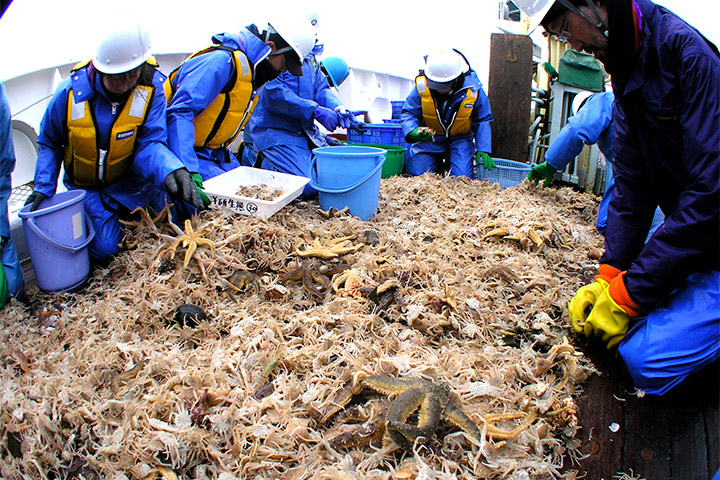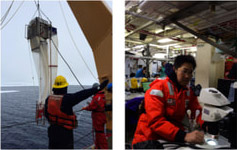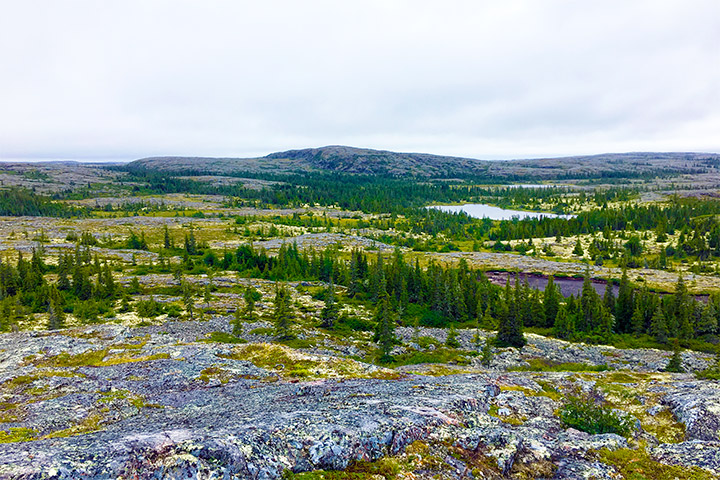Theme 6
Response and biodiversity status of the Arctic ecosystems under environmental change

Fishes and benthos collected by bottom trawling / Photo by Toru Hirawake (Hokkaido University)
This theme is composed of two research projects to achieve the following goals: clarifying the mechanism of biological response to, and changes due to, global warming and sea-ice reduction caused thereby in the Arctic region; fully identifying the impacts of pollutants originated in the low-latitude regions on Arctic creatures, as well as on the biota necessary for biodiversity conservation; and deeply understanding the ecological structure, functions, and services. Specifically, the projects are Research Project 1: Estimation of the Mechanism of the Arctic Ocean Ecosystem Response to Environmental Changes and Human Impacts, and Research Project 2: Study on the Biodiversity of Arctic Ecosystem.
In Research Project 1, we successfully understood, in more detail than our previous reports, the process of maintaining the high productivity and the marine biological response (advection, shift) to environmental changes in the shelves in the Northern Bering Sea. The impact of pollutants was also estimated in the research project. Further understanding of each process is necessary to predict future environmental changes, however, the findings from the two research projects are scientifically important, while at the same time they are also considered to have become helpful in the decision-making process for future conservation of marine ecosystem and fishery resources management in the Arctic Ocean.

Zooplankton sampling by multinet and microscopic observation / Photo by Atsushi Yamagushi (Hokkaido University)
In Research Project 2, we obtained new knowledge through research and study of various species. In some fields, we joined an expert group of Conservation of Arctic Flora and Fauna (CAFF) and played a part in contributing to Arctic Council (AC). We were also dedicated to making recommendations on conservation policies and sharing our research findings with the native people and the people of Japan. Conducting this theme allowed us mainly to ascertain the present situation of Arctic biodiversity and also clarify the ecosystem functions. However, it is still necessary to have a better understanding of changes in biodiversity and shifts in the ecosystem structure and functions linked therewith for clarification of the mechanisms.

Study site in Whapmagoostui-Kuujjuarapik, Canada / Photo by Ryo Kaneko
Research background and overview
Please see here.
Research achievements
Please see here.




